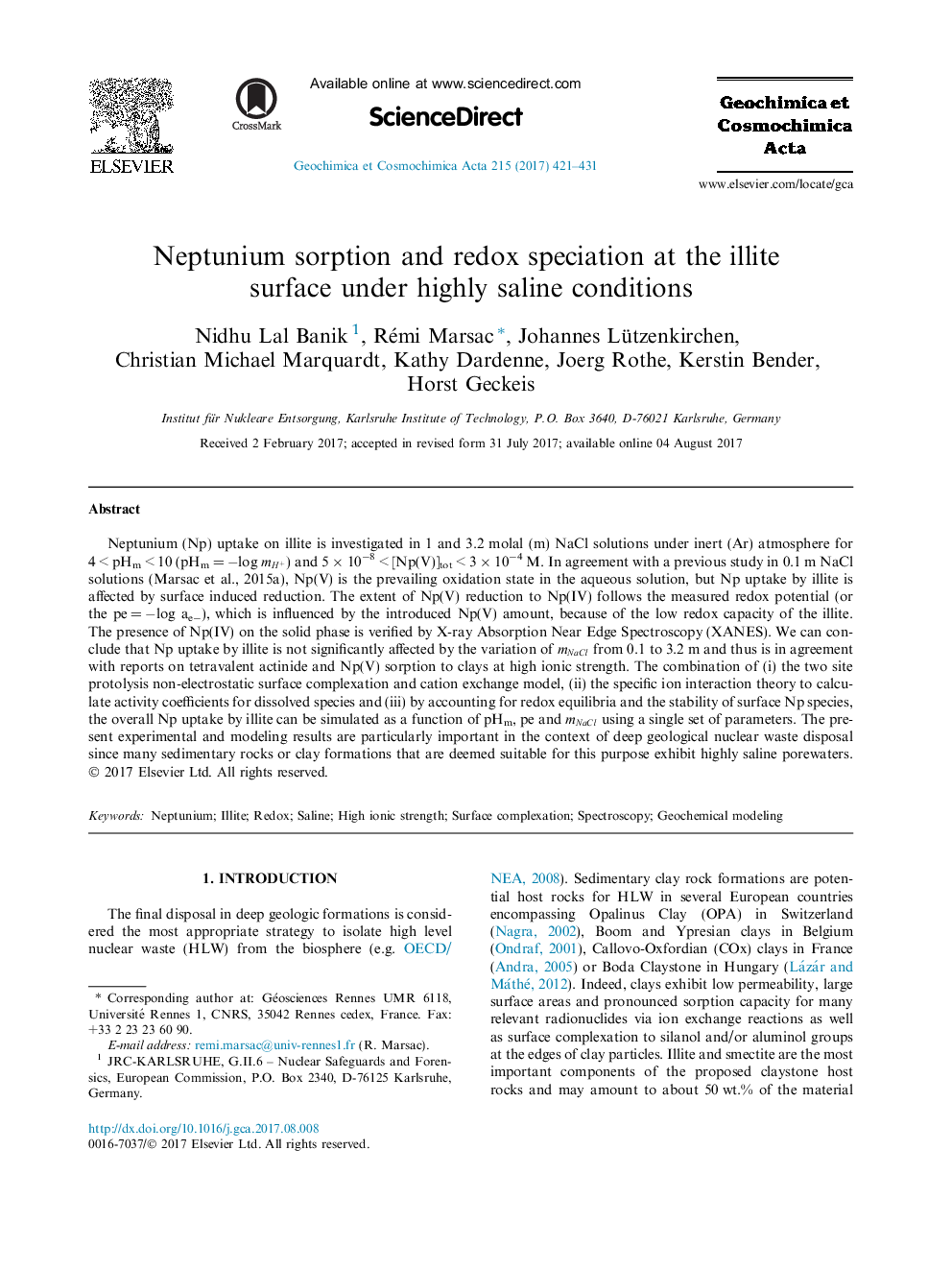| Article ID | Journal | Published Year | Pages | File Type |
|---|---|---|---|---|
| 5783253 | Geochimica et Cosmochimica Acta | 2017 | 11 Pages |
Abstract
Neptunium (Np) uptake on illite is investigated in 1 and 3.2 molal (m) NaCl solutions under inert (Ar) atmosphere for 4 < pHm < 10 (pHm = âlog mH+) and 5 Ã 10â8 < [Np(V)]tot < 3 Ã 10â4 M. In agreement with a previous study in 0.1 m NaCl solutions (Marsac et al., 2015a), Np(V) is the prevailing oxidation state in the aqueous solution, but Np uptake by illite is affected by surface induced reduction. The extent of Np(V) reduction to Np(IV) follows the measured redox potential (or the pe = âlog aeâ), which is influenced by the introduced Np(V) amount, because of the low redox capacity of the illite. The presence of Np(IV) on the solid phase is verified by X-ray Absorption Near Edge Spectroscopy (XANES). We can conclude that Np uptake by illite is not significantly affected by the variation of mNaCl from 0.1 to 3.2 m and thus is in agreement with reports on tetravalent actinide and Np(V) sorption to clays at high ionic strength. The combination of (i) the two site protolysis non-electrostatic surface complexation and cation exchange model, (ii) the specific ion interaction theory to calculate activity coefficients for dissolved species and (iii) by accounting for redox equilibria and the stability of surface Np species, the overall Np uptake by illite can be simulated as a function of pHm, pe and mNaCl using a single set of parameters. The present experimental and modeling results are particularly important in the context of deep geological nuclear waste disposal since many sedimentary rocks or clay formations that are deemed suitable for this purpose exhibit highly saline porewaters.
Keywords
Related Topics
Physical Sciences and Engineering
Earth and Planetary Sciences
Geochemistry and Petrology
Authors
Nidhu Lal Banik, Rémi Marsac, Johannes Lützenkirchen, Christian Michael Marquardt, Kathy Dardenne, Joerg Rothe, Kerstin Bender, Horst Geckeis,
